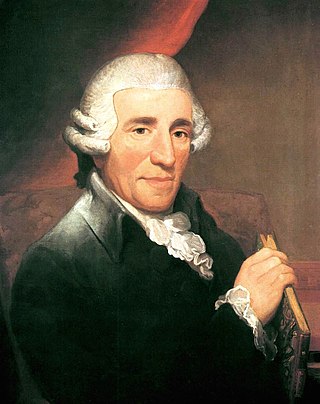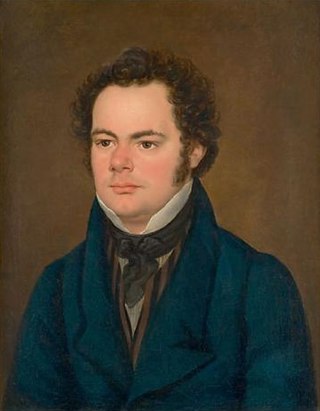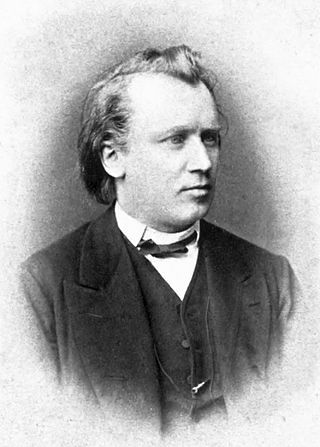Ludwig van Beethoven's Minuet in G major, WoO 10, No. 2 is a composition originally written for orchestra, but was lost and only an arrangement for piano could be found. It has become very popular.
Ludwig van Beethoven's Minuet in G major, WoO 10, No. 2 is a composition originally written for orchestra, but was lost and only an arrangement for piano could be found. It has become very popular.
The minuet is in incipient ternary form, A-A-B-A, a type of song form as differentiated from other, such as the binary song form in the format A-B, the ternary A-B-A, or the rondo, A-B-A-C-A or an alternate form but with the "A" theme repeating after each new theme in the sequence of themes. In terms of A-B-A sections, the three parts are:
The Moderato section features a melody, marked legato (to play in a smooth, even style without noticeable breaks between the notes). Quarter notes occupy most of the left hand in this A section, which is made up of two periods. The first four-measure (a) phrase is in the tonic of G Major; the second four-measure (b) phrase modulates from the tonic to the dominant of D Major.
This period, the main theme of the piece, is repeated once. Next comes the second period which consists of a four-measure (c) phrase with a different melody and modulates back into the tonic for the final four-measures, which begins and ends in G Major. This phrase is a variation of (a) so as to stay in the tonic, so must be designated (a-1) to make this and other slight alterations clear. It is still very recognizable as the (a) thematic music.
The trio section features non-stop eighth notes in the right hand and, once again, quarter notes in the left hand. It starts with an eight-measure modulating passage repeated once and moves on to another eight-measure passage that ends in the tonic, and is also repeated once. This passage contains four harmonious measures that are followed by a varied reiteration of the theme in the trio part (which is played in the first eight-measure passage). The section, without going into as much detail as is shown above for the legato section (although this could be done) is thus in binary song form.
The last section, which is Moderato also, is a repeat of the first section, but without the repeat. It is that which makes the piece an incipient ternary song form: A-A-B-A.
In The Music Man , the children of River City learn the Minuet in G via the "Think Method" taught by Professor Harold Hill. It was also the inspiration for the theme of the British sitcom Fawlty Towers .[ citation needed ] It appears in the Shirley Temple film The Littlest Rebel (1935). It is the opening-credits song of the 1937 short A Car-Tune Portrait . In the Columbo episode "A Bird in the Hand ..." (1992), an orchestral version of this minuet plays softly in the background during the Rolls-Royce dealership scene. The piece also appears in the Baby Einstein CD Baby Beethoven.
Sonata form is a musical structure generally consisting of three main sections: an exposition, a development, and a recapitulation. It has been used widely since the middle of the 18th century.
Binary form is a musical form in 2 related sections, both of which are usually repeated. Binary is also a structure used to choreograph dance. In music this is usually performed as A-A-B-B.
Ternary form, sometimes called song form, is a three-part musical form consisting of an opening section (A), a following section (B) and then a repetition of the first section (A). It is usually schematized as A–B–A. Prominent examples include the da capo aria "The trumpet shall sound" from Handel's Messiah, Chopin's Prelude in D-Flat Major "Raindrop", and the opening chorus of Bach's St John Passion.

Symphony No. 44 in E minor, Hoboken I/44, was completed in 1772 by Joseph Haydn. It is popularly known as Trauer. An apocryphal story relates that Haydn asked for the slow movement of this symphony to be played at his funeral.

The Piano Sonata No. 12 in F major, K. 332 (300k) by Wolfgang Amadeus Mozart was published in 1784 along with the Piano Sonata No. 10 in C major, K. 330, and Piano Sonata No. 11, K. 331. Mozart wrote these sonatas either while visiting Munich in 1781, or during his first two years in Vienna. Some believe, however that Mozart wrote this and the other sonatas during a summer 1783 visit to Salzburg made for the purpose of introducing his wife, Constanze to his father, Leopold. All three sonatas were published in Vienna in 1784 as Mozart's Op. 6.

Ludwig van Beethoven's Piano Sonata No. 29 in B♭ major, Op. 106 is a piano sonata that is widely viewed as one of the most important works of the composer's third period and among the greatest piano sonatas of all time. Completed in 1818, it is often considered to be Beethoven's most technically challenging piano composition and one of the most demanding solo works in the classical piano repertoire. The first documented public performance was in 1836 by Franz Liszt in the Salle Erard in Paris to an enthusiastic review by Hector Berlioz.
Joseph Haydn completed his Symphony No. 92 in G major, Hoboken I/92, popularly known as the Oxford Symphony, in 1789 as one of a set of three symphonies commissioned by the French Count d'Ogny. Instrumentation for the symphony is: flute, 2 oboes, 2 bassoons, 2 horns, 2 trumpets, timpani, and strings.

The Piano Sonata No. 18 in E♭ major, Op. 31, No. 3, is an 1802 sonata for solo piano by Ludwig van Beethoven. A third party gave the piece the nickname "The Hunt" due to one of its themes' resemblance to a horn call. Beethoven maintains a playful jocularity throughout much of the piece, but as in many of his early works, the jocular style can be heard as a facade, concealing profound ideas and depths of emotion.

Ludwig van Beethoven's Piano Sonata No. 1 in F minor, Op. 2 No. 1, was written in 1795 and dedicated to Joseph Haydn. It was published simultaneously with his second and third piano sonatas in 1796.
Beethoven's Piano Sonata No. 11 in B♭ major, Op. 22, was composed in 1800, and published two years later. Beethoven regarded it as the best of his early sonatas, though some of its companions in the cycle have been at least as popular with the public.

Ludwig van Beethoven's Piano Sonata No. 22 in F major, Op. 54, was written in 1804. It is contemporary to the first sketches of the Symphony No. 5 in C Minor. It is one of Beethoven's lesser known sonatas, overshadowed by its widely known neighbours, the Waldstein and the Appassionata.
The Sonata in F major is a bassoon sonata with piano accompaniment written by William Hurlstone in 1904, two years before his death. It was first published by Avision in 1907, and was later re-issued by Emerson in 1976.
The Eleven Bagatelles, Op. 119 were written by Ludwig van Beethoven between the 1790s and the early 1820s.

Franz Schubert's last three piano sonatas, D 958, 959 and 960, are his last major compositions for solo piano. They were written during the last months of his life, between the spring and autumn of 1828, but were not published until about ten years after his death, in 1838–39. Like the rest of Schubert's piano sonatas, they were mostly neglected in the 19th century. By the late 20th century, however, public and critical opinion had changed, and these sonatas are now considered among the most important of the composer's mature masterpieces. They are part of the core piano repertoire, appearing regularly on concert programs and recordings.
The Op. 33 String Quartets were written by Joseph Haydn in the summer and Autumn of 1781 for the Viennese publisher Artaria. This set of string quartets has several nicknames, the most common of which is the "Russian" quartets, because Haydn dedicated the quartets to the Grand Duke Paul of Russia and many of the quartets were premiered on Christmas Day, 1781, at the Viennese apartment of the Duke's wife, the Grand Duchess Maria Feodorovna. Some scholars theorize that the "Russian" quartets were the inspiration for Mozart's six string quartets dedicated to Haydn, but no direct evidence has been found.

The six string quartets Op. 20 by Joseph Haydn are among the works that earned Haydn the sobriquet "the father of the string quartet". The quartets are considered a milestone in the history of composition; in them, Haydn develops compositional techniques that were to define the medium for the next 200 years.

The Piano Quartet No. 3 in C minor, Op. 60, completed by Johannes Brahms in 1875, is scored for piano, violin, viola and cello. It is sometimes called the Werther Quartet after Goethe's The Sorrows of Young Werther. The premiere took place in Vienna on November 18, 1875, to an anxious public. Richard Wagner and his wife Cosima were in attendance.

The Piano Quartet No. 1 in G minor, Op. 25, was composed by Johannes Brahms between 1856 and 1861. It was premiered in 1861 in Hamburg, with Clara Schumann at the piano. It was also played in Vienna on 16 November 1862, with Brahms himself at the piano supported by members of the Hellmesberger Quartet. Like most piano quartets, it is scored for piano, violin, viola, and cello.
Pièces pittoresques are a set of ten pieces for piano by Emmanuel Chabrier. Four of the set were later orchestrated by the composer to make his Suite pastorale.

The String Quartets, Op. 50, were composed by Joseph Haydn in 1787. The set of six quartets was dedicated to King Frederick William II of Prussia. For this reason the set is commonly known as the Prussian Quartets. Haydn sold the set to the Viennese firm Artaria and, without Artaria's knowledge, to the English publisher William Forster. Forster published it as Haydn's Opus 44. Haydn's autograph manuscripts for Nos. 3 to 6 of the set were discovered in Melbourne, Australia, in 1982.